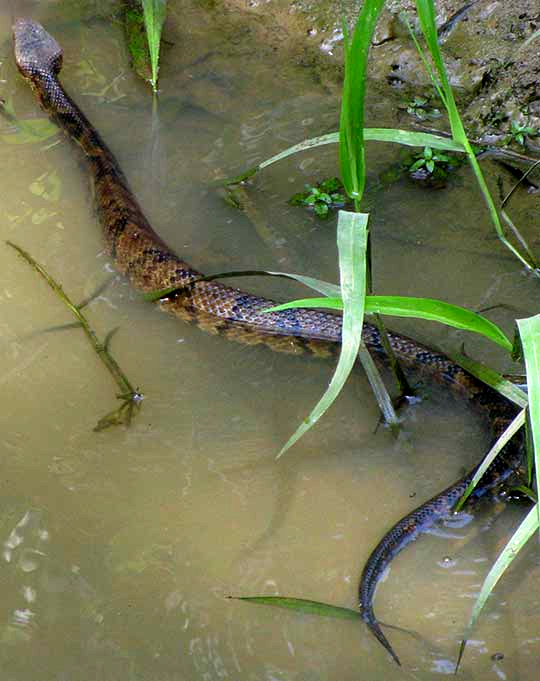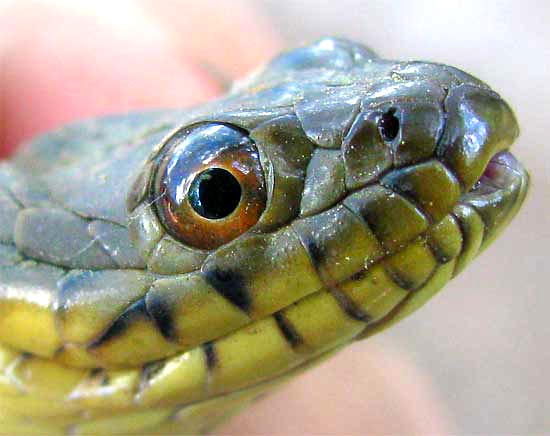Excerpts from Jim Conrad's
Naturalist Newsletter
from the May 27, 2012 Newsletter issued from the woods of the Loess Hill Region a few miles east of Natchez, Mississippi, USA
DIAMOND-BACKED WATER SNAKE

Above a yard-long (1m) snake works along the banks of the same drainage ditch where two weeks ago we documented a young Yellow-bellied Water Snake looking for frogs. This week it's an adult Diamondback Water Snake, NERODIA RHOMBIFERA, doing the same thing. Water snakes must find this ditch a frog-collecting heaven.
With its "arrowhead-shaped" head, watery habitat and the snake's predisposition for fighting and biting vigorously when threatened, this species is often misidentified as a Cottonmouth or Water Moccasin, but the Diamondback's neck and body are too slender to be that of a Cottonmouth, plus the diamondback pattern is classic for the Diamondback Water Snake. Cottonmouths are much darker, too.
Diamondback Water Snakes are distributed mainly in the south-central US, south into Mexico, extending as far north as southern Illinois and Indiana, west to south-central Texas and east to central Alabama. Mostly they feed on fish and frogs.
from the June 16, 2008 Newsletter issued from the woods of the Loess Hill Region a few miles east of Natchez, Mississippi, USA
SNAKE BENEATH A FLOWERPOT

Karen was moving flowerpots when she let out a howl, which from a distance I recognized as a snake-spotting howl. A snake had been curled up beneath a pot Karen had just lifted. As I approached, Karen warned me that it looked like a rattler, and at a distance it sure did, though the snake was so small that I figured Karen's howl had been more from surprise than terror. You can see the unmoved snake above.
Like a rattler it was thick-bodied, blotchy-patterned, and had a somewhat triangular head, which pit vipers tend to have because of the bulging venom glands behind their jaws. However, as you can see in the picture, this snake's black pupils are round, not "cat-eyed," as is a pit viper's, plus there's no pit between the eye and nostril, which gives the pit vipers their name. All of North America's venomous snakes except the Corals are pit vipers, and all have "cat-eyes" and pits. You can see a close-up of the round-pupiled, pitless head of Karen's snake below:

It was a water snake, the Diamond-backed Water Snake, NERODIA RHOMBIFER, of the southcentral US into Mexico, famed for aggressively biting, but of course it is non-venomous. The blotching pattern basically consists of light blotches on the side being topped by dark blotches running along the spine. Sometimes the pattern breaks up. Normally it's found in aquatic habitats but this one was beneath a flowerpot atop a little hill with no permanent body of water within half a mile.